How To Build An Organic Marketing Engine — 4 Lessons From Spotify Wrapped

I listen to a lot of Khalid, ok?
What Spotify has achieved this year with Spotify Wrapped is the creation of an organic marketing engine. The experience, which Spotify has been honing over the past year years, begins in-app and takes users on a journey down music memory lane, highlighting the artists, songs and genres that were the soundtrack to their 2019. Supported by email and in-app prompts, the experience is optimized for sharing, creating virality organically through social sharing and augmented by ad money and sponsored hashtags.
Here’s what startups can learn from the success of Spotify Wrapped 👇
Give users the content and tools to express their identity
Everything we spend money on beyond the essentials for living is a luxury. We buy stuff to reinforce our identity to ourselves internally, and to signal our identity to the world externally. The best marketing taps into this human desire and convinces us to buy/engage/share to signal to others who we are and what we care about.
With Wrapped, Spotify are tapping into our desire to signal music taste, and all the inferences about someone’s personality, lifestyle, taste that we associate with that.
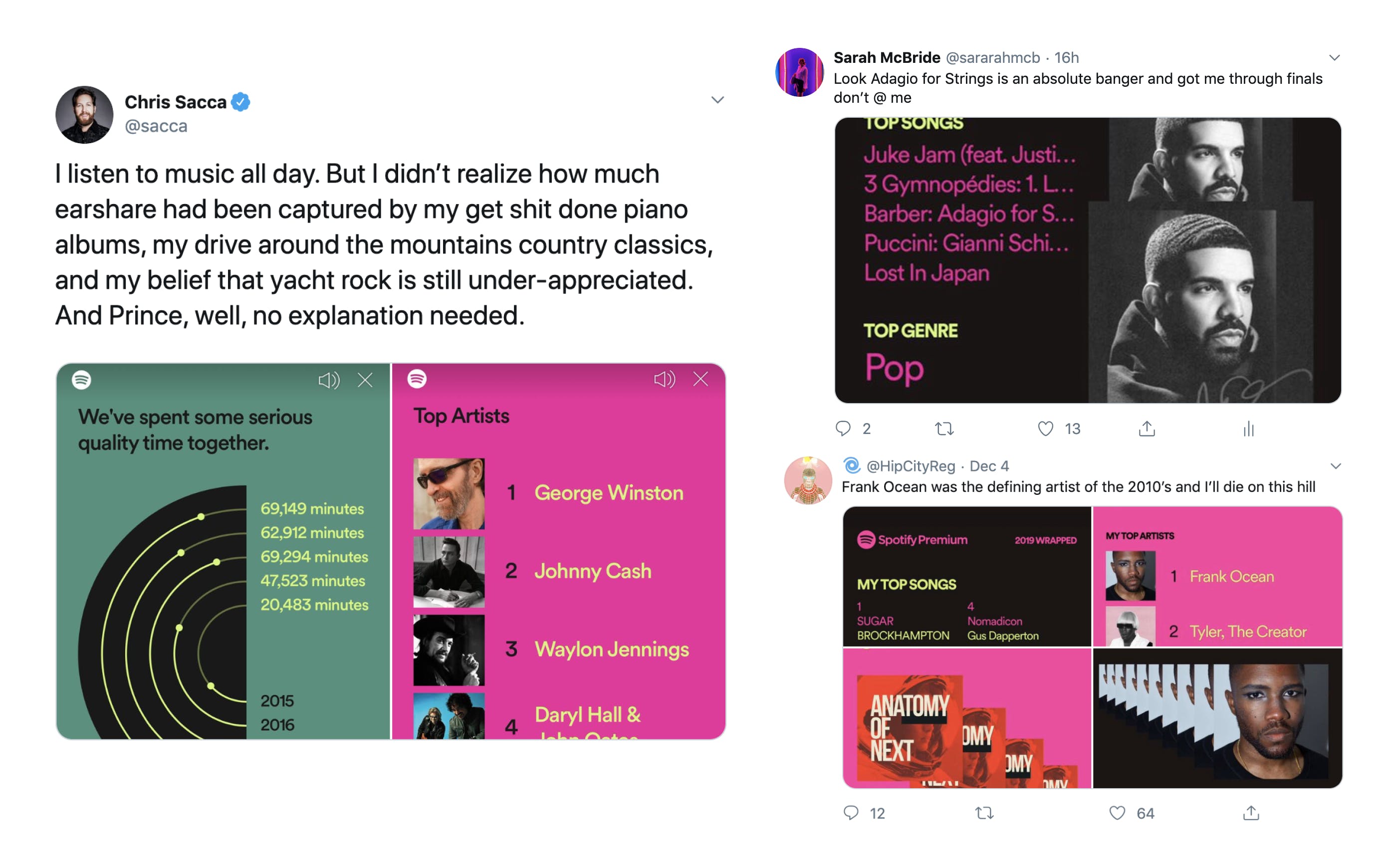
Make the sharing experience as frictionless as possible
During my morning commute last Friday, I opened my Spotify app as normal and instead of navigating straight to my morning podcast playlist, I received a prompt within the app to see my year wrapped. The UX is like flipping through an Instagram story, an experience that’s already intuitive to me. Each screen in the “story” was beautiful and full of little nuggets of self-expression that I couldn’t help but want to share.
One screen showed how many hours of Shawn Mendes I’d listened to this year, so I texted it straight away to my sister as we both share a passion for Shawn’s art. One showed that the Economist was my most listened to podcast — that went onto my Instagram story to flex about how I like to keep on top of economic and current affairs. One showed Drake as my top artist of the decade, which I shared directly to a friend in Instagram messenger as they also had Drake as their top artist.
Within minutes, I was drawn into this experience, found the information I needed to express my identity, and with one click, shared this information on different channels depending on what about myself I was trying to communicate and to whom.
Harness organic distribution channels
To really optimize a frictionless sharing experience, investing in building legit integrations to share content from your app with social platforms pays off. Doing so allows you to put your brand’s best foot forward, giving you great control over how users share content from your app. It’s also a better experience for the user, allowing them to share ready-cropped and formatted content in just a few clicks.
In the Wrapped example, Spotify really knows their user. In the sharing menu, they list Instagram Stories first, Snap second, Twitter third. Sharing to Snap and Instagram is via a standard integration with Snapkit and the Instagram Platform, and works really well. Twitter is a little more difficult as there is no direct integration. The team seem to have found a smart work around given the platform constraints, by creating a custom hyperlink that populates the twitter card with a custom image, not to mention tags the artist and Spotify, and pre-populates with the official hashtag.
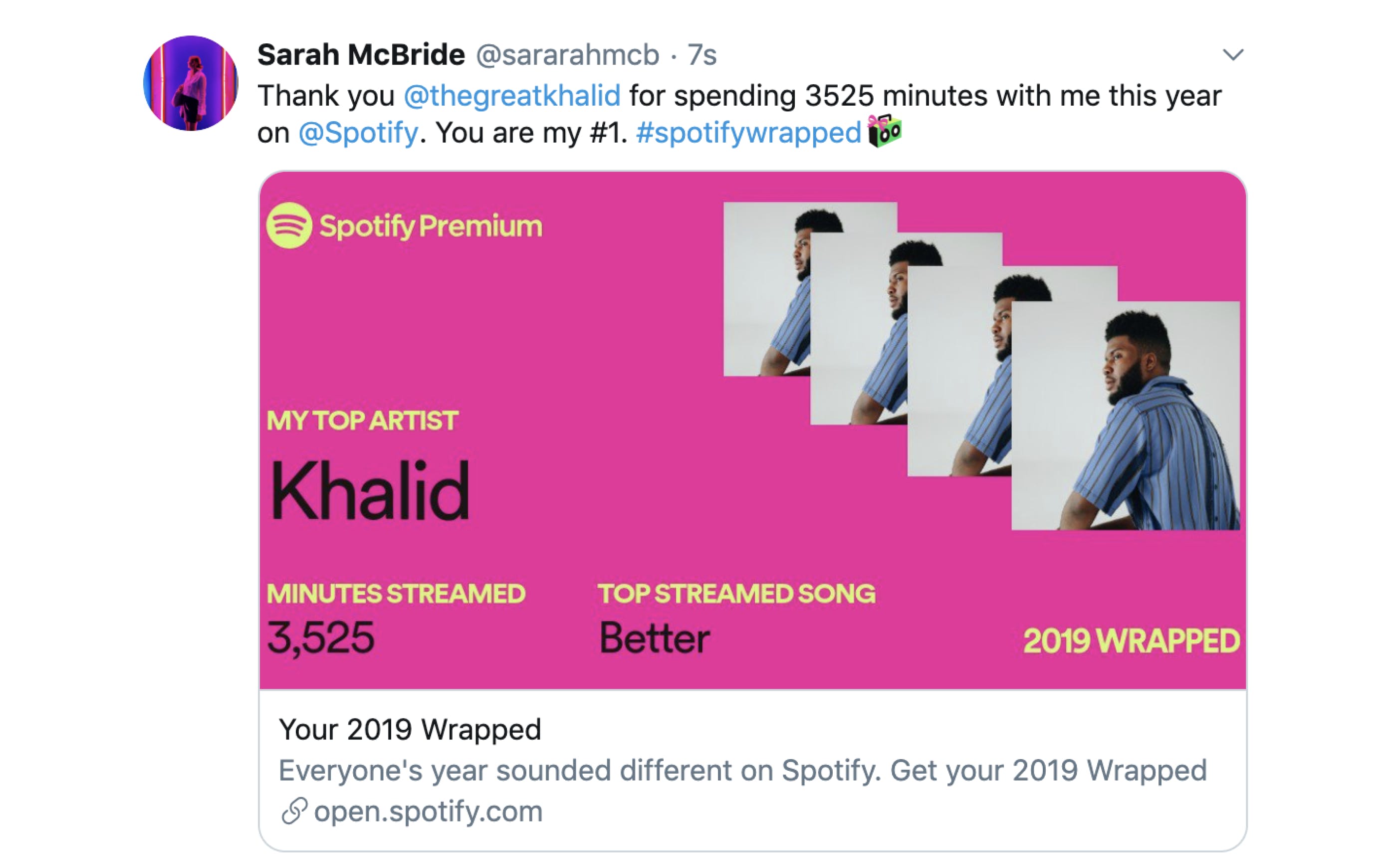
However, despite the workaround, much of the sharing I’ve noticed on Twitter has been screenshots from the in-app experience, desktop or images downloaded after they’ve been shared to Instagram or Snap.
Create content and an experience that people can’t resist sharing
So you’ve tapped into a deep psychological need, created a frictionless experience to share, and harnessed platform integrations so that it’s shared in an optimized format — but what exactly are people sharing?
The final piece of the puzzle is the copy and design of the assets you are giving your users to share. Have you made the call on whether to brand it with your logo or not? Is the color scheme optimized to stand out on social media or have you defaulted to your brand colors? Is the overall experience so compelling that influencers and people of interest can’t help but notice it in their timeline and mentions and share it without you asking them to (or, having to pay them to do so?!). The best organic marketing engines hit all these points, but it won’t be a home run at first. An iterative approach that seeks to refine, test, refine will set you in good stead.
Spotify Wrapped has achieved such widespread sharing this year that it has already been turned into a meme format, a mere 24-hours after launching. Not to mention it has created an opportunity for users to throw shade on Spotify’s biggest competitor, Apple Music.
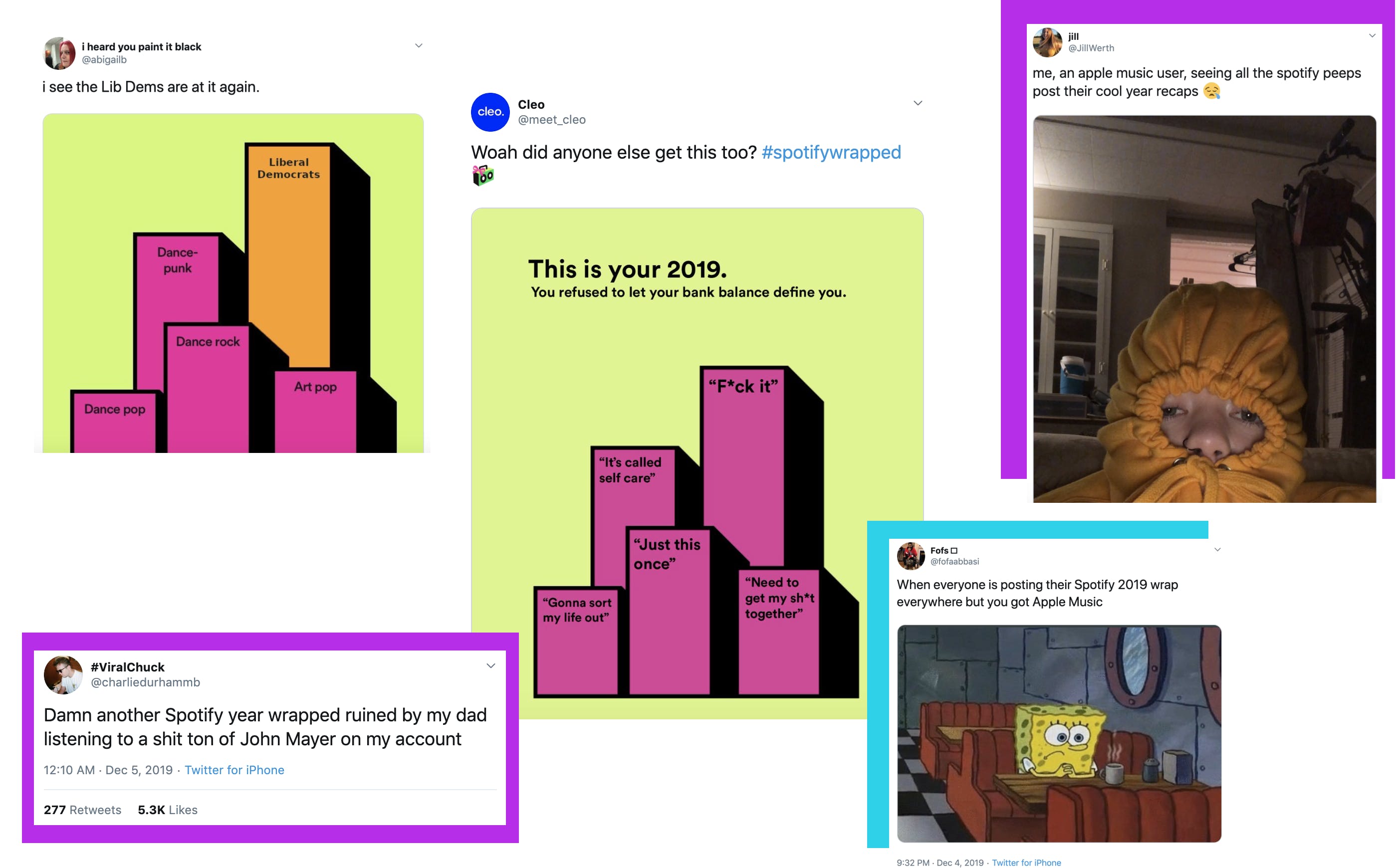
A few steps startups can take to build an organic marketing engine 🚀
Not every startup has a product with masses of data and a number-crunching team behind it to create an experience like Wrapped. And not every startup will be able to build out an entire in-app story and sharing experience like Spotify have. But here are a few steps startups can take to build an organic marketing engine on social media:
Look for ways in which your users are already capturing moments within your app.
Maybe they’re taking screenshots and annotating them, maybe they’re tweeting about you and not tagging you, maybe they’re exporting their own data to generate insights. Find out if and how users are already sharing moments from your app and then decide whether or not to prioritize improving that experience in the product or marketing roadmap. User interviews can get some insight, but doing a Twitter and Instagram search every day for mentions of your company may surface stuff that doesn't get pulled into your mentions.
Map out all your touch points with the user.
Ensure that there are gentle nudges for your users across all your touch points for them to either follow your social accounts or share their experience on their account, or do both. From your emails, to your app on-boarding, to packaging, these are all prime places to plant a flag to your user that they can join a community, share their experience and get in touch with you directly via social channels.

The Haus unboxing experience is a thing of beauty. And they give you a reminder of just who to tag when you go to share it on your social accounts.
Incentivize and reward users for sharing.
Get the ball rolling by incentivizing users to create content around your brand. Giveaways are a super easy way to do this, but what can work even better for community-building is offering to mail swag to users who post on social about your brand. Chances are they’ll post even more once they have that branded sweater or socks that you mailed them. And once they do post, reward them by retweeting and sharing on your channels. Give their account and content a platform and exposure to your audience. Don’t tell people your product is awesome, let the words and photos and videos of your users say it for you. Reward them for doing your marketing job for you.
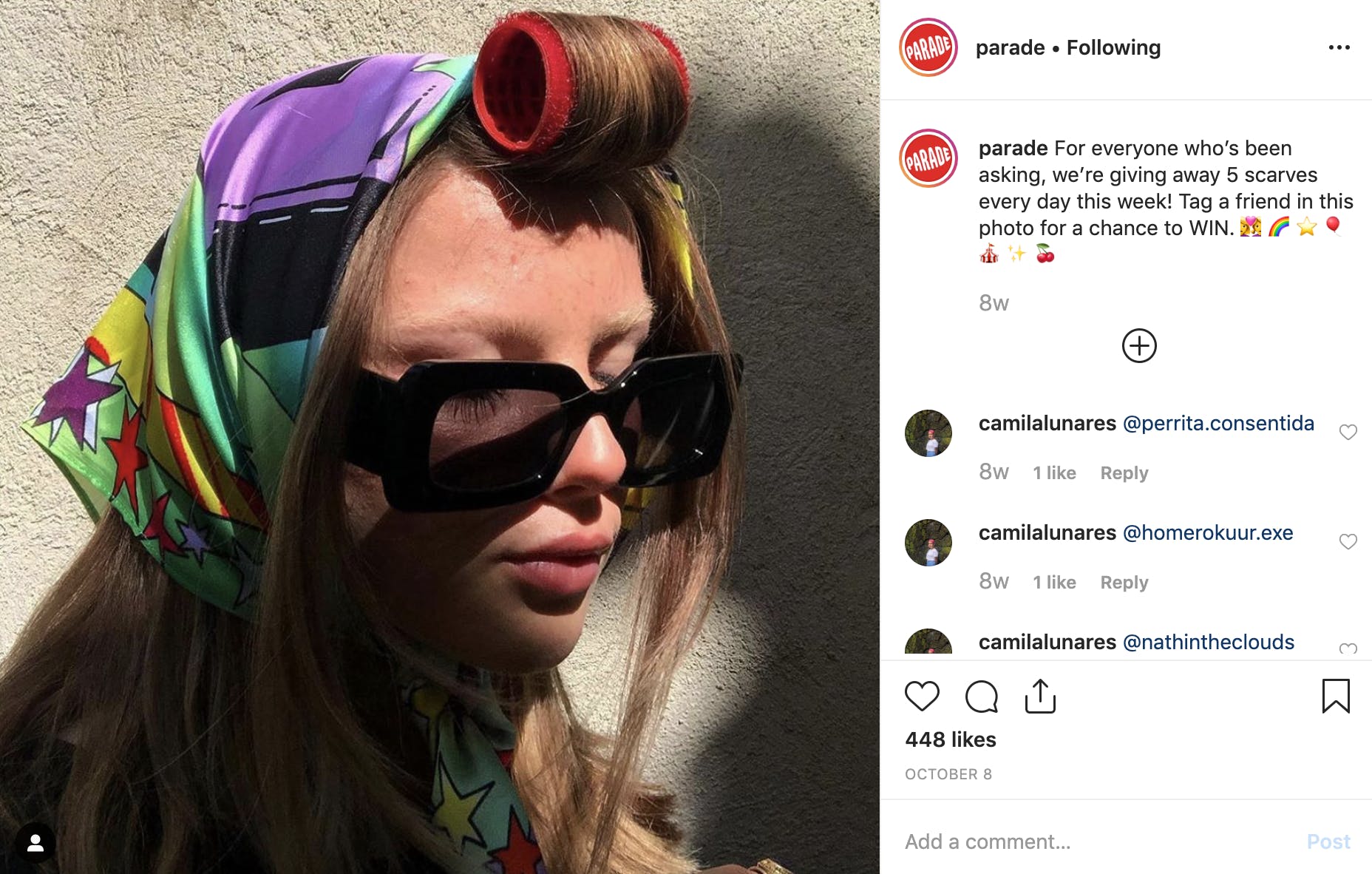
Parade use limited edition scarf giveaways to engage their community.
Product team 🤝 Marketing team
Your content, aesthetic and tone of voice on social should be as close as possible to what users experience in the app or how they interact with your product. And both of those things should reflect your brand. The closer your product team can work with your marketing team, the more these elements fit naturally together and create a holistic and authentic experience for the user across every touch point you have with them. It also makes it easier to prioritize product features that are optimized for social sharing. Startups are inherently smaller teams and so should have the edge in this domain over bigger organizations. Don’t snooze on that opportunity.
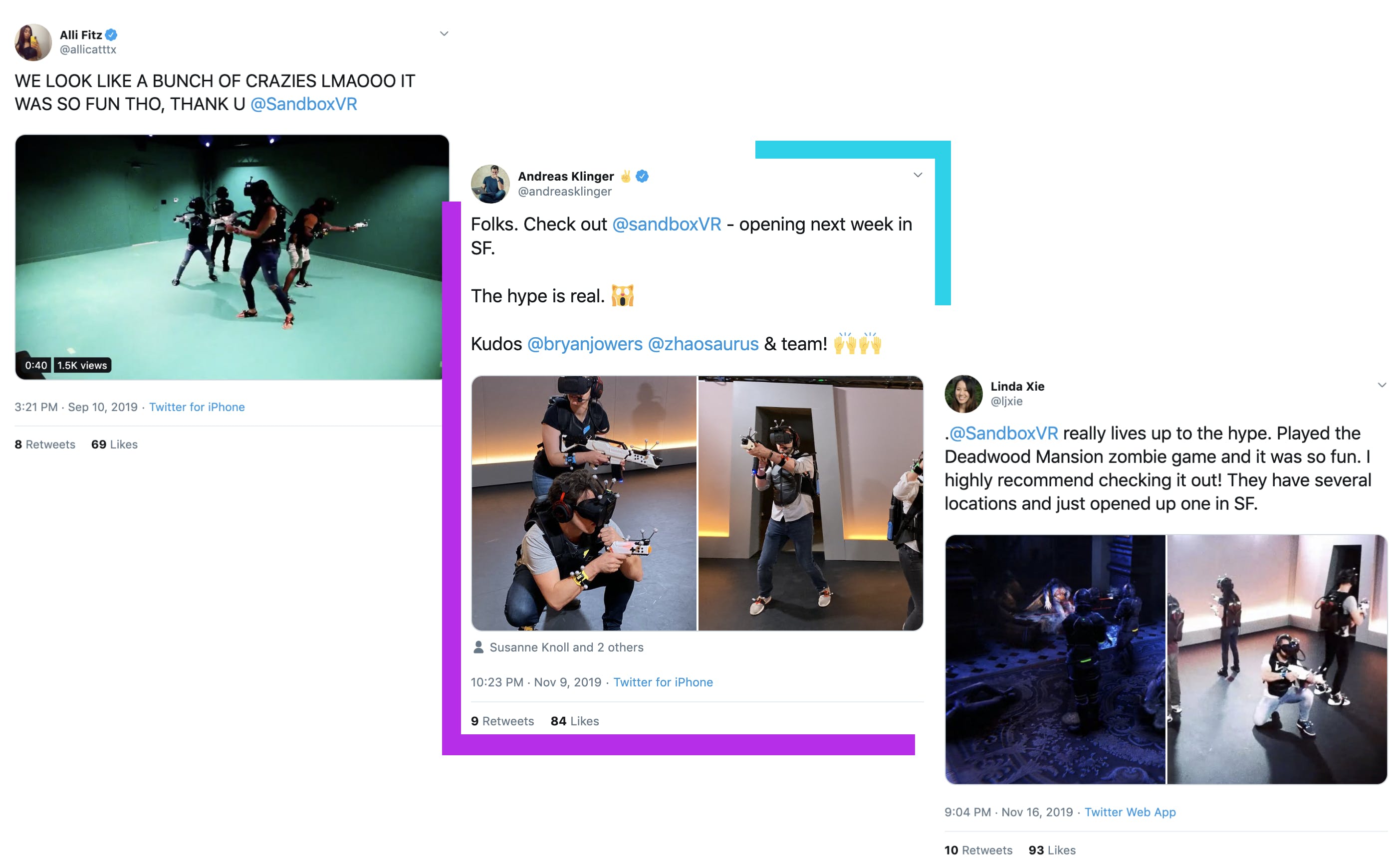
The Sandbox VR team up-levelled the social sharing experience by making it available to you in-app straight after playing. The result? More organic social coverage.
In Conclusion
You can have the best product in the world, but if you’re not harnessing it to create an organic marketing engine, you’re going to find yourself spending an unnecessary amount of money on paid acquisition. Understand how your product supports your user’s identity, build a frictionless way for them to share that experience with others, harness distribution platforms through integration, and give content to your users that they can’t help but share.
Comments (8)
Marc H. Guirand
Discarding bad ideas quickly
Ilias Galiotos
Inbound Marketing Specialist
Sam Rojas
Thiago Sardim
Human
Ali Khundmiri
Building Blue Collar Ecosystem
More stories

Aaron O'Leary · Announcements · 2 min read
Introducing Shoutouts

Finn Lobsien · Opinions · 5 min read
Can Devin AI Replace Product Managers?

Aaron O'Leary · News · 2 min read
Meet Nvidia's new localized AI chatbot

Sarah Wright · News · 2 min read
The top 15 AI products from 2023


